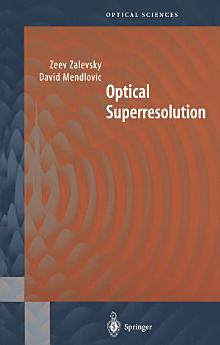Optical Superresolution
David Mendlovic
ডিচে ২০১২ · Springer Series in Optical Sciences কিতাপ 91 · Springer
ইবুক
255
পৃষ্ঠা
reportমূল্যাংকন আৰু পৰ্যালোচনা সত্যাপন কৰা হোৱা নাই অধিক জানক
এই ইবুকখনৰ বিষয়ে
This book explores ways to improve the classical resolution limits of an imaging system. Various approaches dealing with exceeding the limita tions of the lens aperture, the pixel's size in the camera, and the noise generated at the detector are presented and analyzed. The book starts by presenting the theoretical foundations and by introducing the back ground and the related terms and then proceeds into the desired system analysis. Despite the fact that the book tends to provide the mathematical background required to follow the presented derivations, it assumes that the reader has acquired a basic knowledge in optical Fourier processing. Ifthis is not the case, we strongly advise using Goodman's book: Intro duction to Fourier Optics as mandatory prereading material. The book is mainly intended for a graduated audience who may be researchers in an academy or engineers in the industry seeking information that may assist them in improving the performance of their electro-optical system design. The last chapter of the book is a more practical chapter that explores several industry-related examples and applications that may use the superresolution techniques in real industrial electro-optical systems. The most important feature of this book is its attempt to address an important subject that has not been addressed before, the subject of resolution and imaging, and to discuss techniques of how to exceed these classical limitations.
এই ইবুকখনক মূল্যাংকন কৰক
আমাক আপোনাৰ মতামত জনাওক।
পঢ়াৰ নির্দেশাৱলী
স্মাৰ্টফ’ন আৰু টেবলেট
Android আৰু iPad/iPhoneৰ বাবে Google Play Books এপটো ইনষ্টল কৰক। ই স্বয়ংক্রিয়ভাৱে আপোনাৰ একাউণ্টৰ সৈতে ছিংক হয় আৰু আপুনি য'তে নাথাকক ত'তেই কোনো অডিঅ'বুক অনলাইন বা অফলাইনত শুনিবলৈ সুবিধা দিয়ে।
লেপটপ আৰু কম্পিউটাৰ
আপুনি কম্পিউটাৰৰ ৱেব ব্রাউজাৰ ব্যৱহাৰ কৰি Google Playত কিনা অডিঅ'বুকসমূহ শুনিব পাৰে।
ই-ৰীডাৰ আৰু অন্য ডিভাইচ
Kobo eReadersৰ দৰে ই-চিয়াঁহীৰ ডিভাইচসমূহত পঢ়িবলৈ, আপুনি এটা ফাইল ডাউনল’ড কৰি সেইটো আপোনাৰ ডিভাইচলৈ স্থানান্তৰণ কৰিব লাগিব। সমৰ্থিত ই-ৰিডাৰলৈ ফাইলটো কেনেকৈ স্থানান্তৰ কৰিব জানিবলৈ সহায় কেন্দ্ৰত থকা সবিশেষ নিৰ্দেশাৱলী চাওক।







